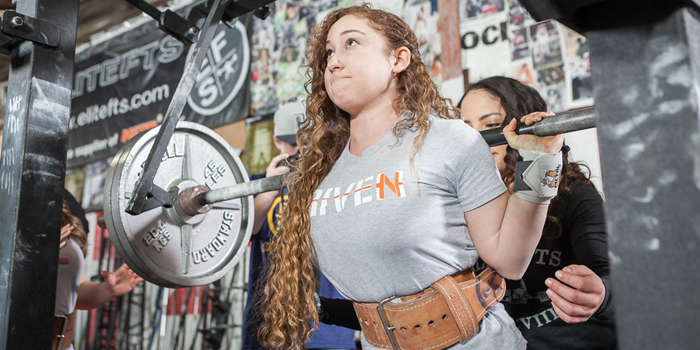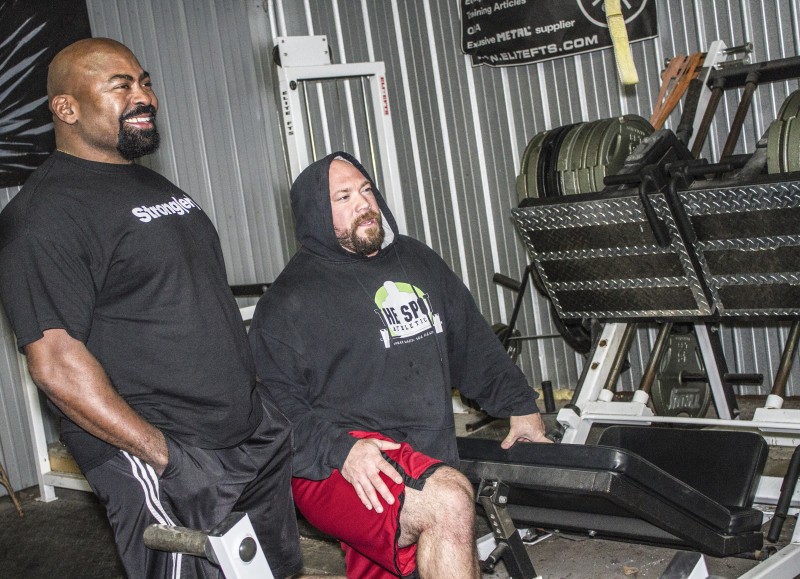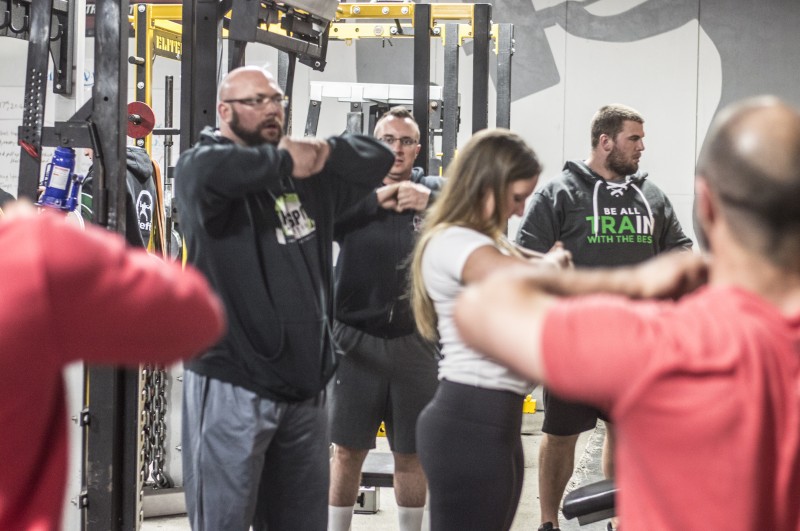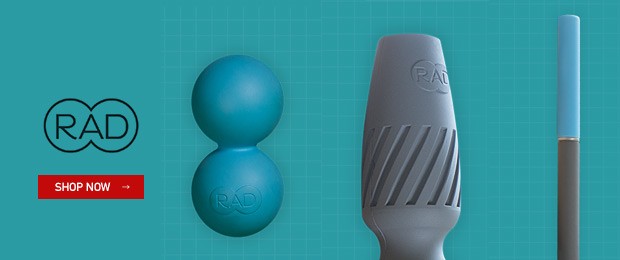
Over the years I’ve come to realize that one of the most ignored things in peoples’ daily training is rehabilitation work, also known as “prehab.” Prehab is a combination of corrective exercises, mobility work, soft tissue techniques, and temperature therapies intended to prevent future injury and strengthen current weaknesses and instabilities. Personally, I see prehab as an essential group of training exercises that allow me to be “less messed up.” In case this is your first time hearing the word and the corrective exercises commonly associated with prehab, I have included a list below.
Common Corrective Exercises
- Shoulder Internal/External Rotation
- Scap Retractions
- Glute Bridges
- Terminal Knee Extensions
- Shoulder I’s-T’s-Y’s
- Bird Dogs
- Band Walks
As you can see, a lot of these exercises might seem less fun to do than a squat, bench, or deadlift. Since those exercises also have a minimal direct effect on physical jacked-ness, they probably seem pretty unappealing compared to bicep curls, Kroc rows, and booty blasters. I’m guessing those above reasons contribute to why people tend to save corrective exercises for the end of their workouts and often forget to do them. It really seems like most people don’t care about corrective exercises and prehab until chronic injury and age rear their ugly heads. Enter: my current life situation.
RELATED: Troubleshooting Knee Pain While Squatting
I hate to admit it, but aging and chronic injuries have been a catalyst for my current interest in diligently doing my corrective exercises. And, since I realized that the resulting weaknesses were holding me back from getting stronger, I decided to do something about it. That something is prework. Prework, or corrective exercises done during the warm-up, serves to prevent injury, increase strength, and overcome the forgetfulness that occurs when it is time for corrective exercises to be executed at the end of a workout.
So, since the point of this article isn’t to just tell you to do “prework” and then leave you hanging, I’ll suggest how to incorporate it in your training so that it gets done and gets you stronger.
Prework: The combination of Corrective Exercises and Warm-Ups
A warm-up is typically done first in a workout to help prevent injuries by increasing blood flow to the working muscles and tendons. Warm-ups often include bodyweight movements that promote increases in heart rate and body temperature over the course of five to 10 minutes. I have found that this is a great moment to work corrective exercises into your training. If done in a circuit fashion, a string of repeated, corrective, exercises can have the combined effect of elevating your heart rate and preparing your muscles to work. Thus, prework provides an effective warm-up that also tackles the whole prehabilitation-training thing. Below I have provided examples of prework for upper and lower body training sessions.
Upper Body Example (Repeat 3-4 Times)
1. Bodyweight I’s-T’s-Y’s x 10 Reps Each Letter
- Can be done face down on floor, on bench (flat/incline), or bent over.
- Can be done with thumb up, in neutral, thumb down, or all three.
2. Scapula Push-Ups x 15 Reps
- Retract your shoulders, protract your shoulders, then do a full push-up.
3. Retract and Row x 10-15 Reps
- Can be done using seated on a cable row, standing using rope attachment, or bent with a barbell.
Lower Body Example (Repeat 3-4 Times)
1. Banded TKE x 10-15 Reps Each Leg
- Band should be set up at same height as your knee. You should feel tension when you extend the knee/straighten the leg.
2. Squat or Glute Bridge with Band Around Knee x 10-15 Reps
- The point here is to abduct the knees (push them out against the band tension).
- Do the abduction at the top of the glute bridge or in the bottom of the squat, once each rep.
3. Glute Bridge with Ball/Foam Roller Inside Knees x 10-15 Reps
- Adduct, or squeeze the ball hard with your legs to prevent it from slipping down as your go into the glute bridge.
4. Lateral Lunges x 10-15 Reps Each Leg
- Make sure that the hips go back, and that the leg that is not bent maintains a flat foot on foot. Both toes should point straight ahead, give or take 10 degrees.
Periodize and Progress Your Prework
As you become more advanced, I suggest progressing your prework exercises to become more difficult. This will allow you to better “train” your weaknesses/injury prone areas. Prework/corrective exercises, like any other type of exercise, require progression for adaptation to continuously to occur. Below are progressions to advance the prework circuit form above.
Upper Body Example (Repeat 3-4 Times)
1. DB Weighted I’s-T’s-Y’s x 10-15 Reps Each Letter
- Use floor, bench/incline bench, or bent over.
- Leave head in neutral position; do not allow traps to shrug up.
2. Plate Weighted Scapula Push-Ups x 10-15 Reps
- Do not allow hips to sag or pike up.
3. Retract and (Inverted) Row x 10-15 Reps
- In bottom position, retract shoulder blades, do a rep, return to neutral, and then start again.
- Don’t allow the elbow to lock or the lat will disengage.
- Make this harder by elevating the feet or adding weight on top of the thigh.
Lower Body Example (Repeat 3-4 Times)
1. Banded-Elevated TKE x 10-15 Each Leg
- Do the banded TKE but stand with the leg performing the TKE on a box so that you do a single-leg-type movement.
- As you become more advanced, make the box higher or band stronger.
2. Weighted Squat or Glute Bridge with Band Around Knee x 10-20 Reps
- You will still abduct at the bottom of the squat or top of glute bridge each rep, but now add weight (over the hip with the glute bridge and load the front/side/back with the squat).
- Sometimes I actually do these with a heavier loaded barbell for squats in my accessories later on in a training session, but I’m not sure I would suggest this when first starting to progress the variation.
3. Glute bridge with Ball/Foam Roller Inside Knee x 10-20 Reps
- Add some weight, or you can do this with your feet elevated on bench, wall, chair, ball, etc.
4. Lateral Lunges x 15 Reps Each Leg
- You can load these or add a sliding disc pad to the bending leg.
Summing it Up
No matter how you choose to train, adding corrective exercises to your training is something you should consider if you hope to keep at this lifting stuff long-term. I have yet to hear about someone getting weaker because they added exercises into their training geared toward fixing their imbalances and getting their stabilizers to work more efficiently. So, with that in mind, I challenge you to consider adding some prework into your life for a few weeks and seeing how you feel.












